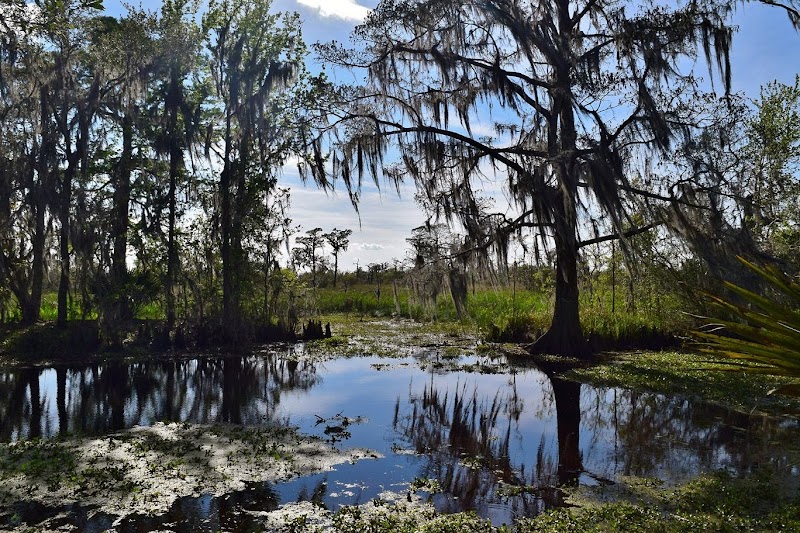
Navigating Transportation Near Marrero, Louisiana: Your Practical Guide
Discover the most practical and reliable transportation options in Marrero, Louisiana. From highways and public transit to airport shuttles and rideshares, this guide ensures you move smoothly through the Westbank and beyond.
Plan Around Traffic Peaks
Rush hours, especially over bridges to New Orleans, can slow you down—schedule trips during mid-morning or early afternoon when possible.
Use Public Transit Passes
Jefferson Transit offers affordable punch passes and monthly options—great for repeated trips or extended stays.
Reserve Rideshares in Advance
During weekends or events, booking Uber or Lyft early can reduce wait times.
Check Weather Before Travel
Heavy rains can cause roadway delays or require detours, so monitor local conditions prior to setting out.
Navigating Transportation Near Marrero, Louisiana: Your Practical Guide
Seamless Transportation Near Marrero, Louisiana: Getting You Where You Need to Be
Marrero offers travelers a practical gateway to the vibrant Westbank area of Louisiana, with transportation options designed to handle both daily commutes and adventurous exploration. Whether arriving by air, road, or public transit, getting around Marrero is a straightforward experience that balances accessibility with Southern charm.
Roadways and Driving: Marrero is connected by key highways including LA-23 and the Westbank Expressway, providing efficient routes to New Orleans and Jefferson Parish. Renting a car here means you can traverse nearby bayous or venture to coastal parks at your own pace. Roads are generally well-maintained, but be mindful of peak traffic hours when crossing bridges or heading toward New Orleans.
Public Transit Options: The Jefferson Transit system serves Marrero with bus lines linking major neighborhoods, commercial centers, and transit hubs. This affordable and reliable network caters to residents and visitors alike, offering routes that stretch through Marrero to Harvey, Gretna, and beyond, making it a solid choice for budget-conscious travelers.
Air Travel Access: Louis Armstrong New Orleans International Airport lies just a short drive northeast, connecting Marrero to national and international flights. Shuttle services and rideshares from the airport make reaching Marrero seamless, whether you’re arriving or departing.
Rideshares and Taxis: Uber, Lyft, and local taxi companies operate actively in the Marrero area, providing flexible point-to-point travel. This option works especially well for short trips or when public transit schedules don’t align with your plans.
Keywords Focus: Transportation in Marrero Louisiana
For visitors, efficient transportation in Marrero Louisiana means variable options like car rentals, transit buses, rideshare availability, and proximity to New Orleans airport. Highlighting keywords such as Marrero shuttle service, Westbank public transit, Louis Armstrong airport transfers, and Marrero taxi services improve searchability and help travelers find the right transportation methods quickly.
Nearby Trips and Outdoor Excursions
Exploring Marrero’s surroundings is just as important as navigating the city itself. Bookable adventures include swamp tours that let you come face to face with alligators and cypress trees, kayaking excursions on the Bayou Segnette, and nature walks through regional parks. These filled days complement your transit choices, encouraging exploration beyond urban routes and into Louisiana’s wild heart.
Nearby Trips
All Adventures
Boat Charters
Water Activities
Adventures near New Orleans, Louisiana
Discover the unique and memorable adventures that make New Orleans, Louisiana special.
Frequently Asked Questions
What public transit options are available in Marrero?
Jefferson Transit operates bus routes throughout Marrero and surrounding Westbank communities. They connect to major shopping areas, transit hubs, and offer connections to New Orleans.
Is it necessary to rent a car in Marrero?
Renting a car is beneficial if you want flexibility to explore beyond Marrero’s neighborhoods, including coastal parks and outlying bayous. However, public transit and rideshares cover many daily needs.
How far is Louis Armstrong Airport from Marrero?
The airport is roughly 12 miles northeast, about a 20-minute drive in light traffic. Shuttle, taxi, and rideshare options make this connection convenient.
Are there bike-friendly transportation options in Marrero?
While bike lanes are limited, some bus routes allow folding bikes for last-mile connectivity, and local bike rentals are available for leisure riding.
Can I use rideshare services like Uber and Lyft in Marrero?
Yes, rideshare companies operate widely in Marrero, offering flexible on-demand transport especially during off-hours when bus runs slow down.
Are there any lesser-known transit tips for visitors?
Locals recommend checking the Jefferson Transit mobile app for real-time schedule updates and timing your trips outside rush hours to avoid delays on bridge crossings.
Recommended Gear
Reusable Water Bottle
Stay hydrated while touring or waiting around transit stops.
Comfortable Walking Shoes
Marrero’s neighborhoods and transit hubs require reliable footwear for short to moderate walks.
Light Rain Jacket
Useful during spring showers while waiting for or traveling on public transit.
Portable Phone Charger
Keep your device powered for navigation apps and on-demand ride services.
Local Insights
Hidden Gems
- "Bayou Segnette State Park for serene kayaking"
- "Treasure Chest Casino ferry dock viewpoint"
- "Small neighborhood murals near Marrero High School"
Wildlife
- "Great blue herons stalking fish in canals"
- "Louisiana black bears in nearby protected lands"
- "Alligators basking along bayou edges"
History
"Marrero grew as an industrial and residential hub on the Westbank, shaped by its access to waterways and proximity to New Orleans. The area's industrial heritage contrasts with nearby natural landscapes, reflecting a diverse regional identity."